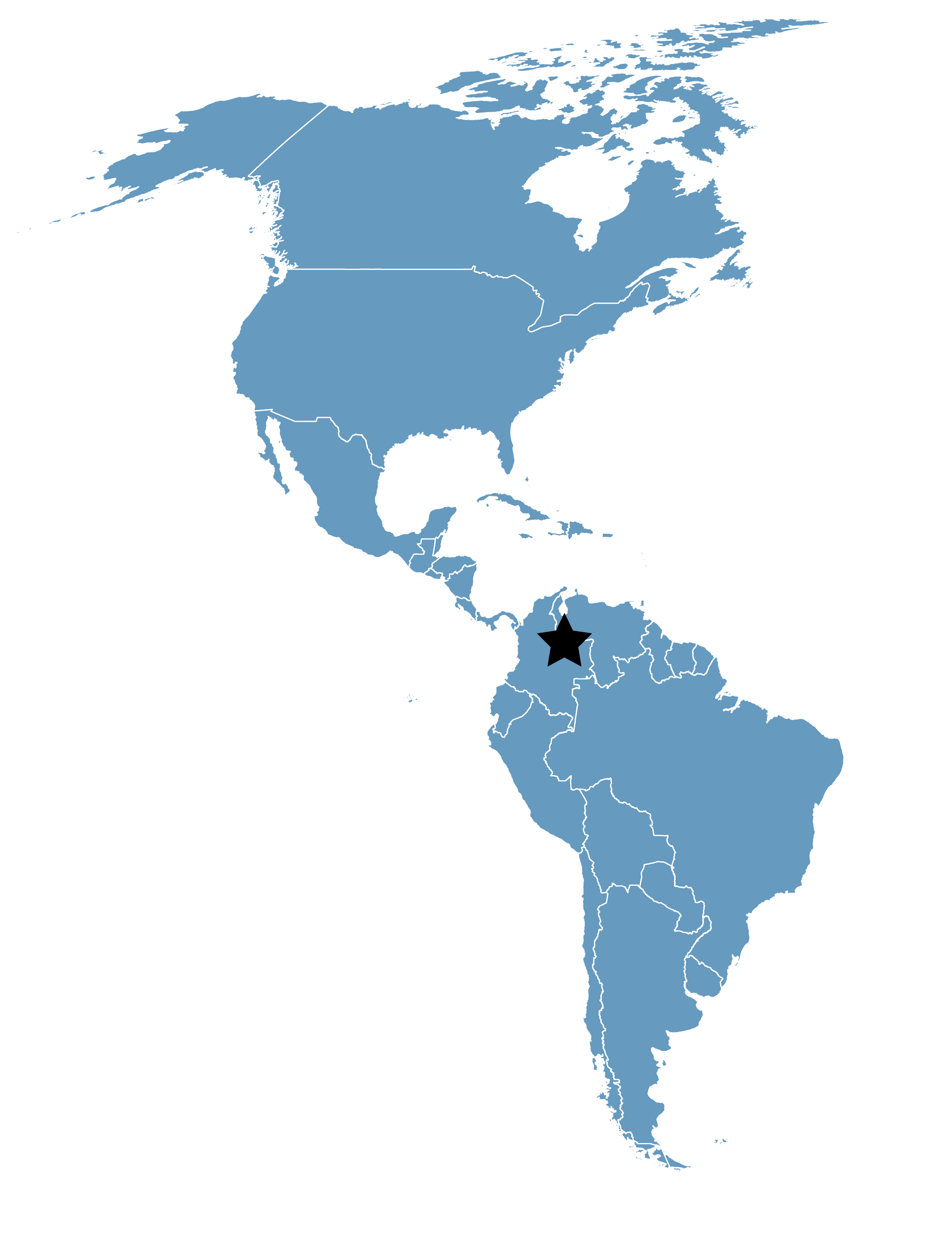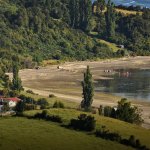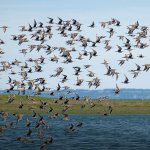Sabanas de Paz de Ariporo y Trinidad
Location
Casanare Department, Colombia
Category
Regional
Basis for Designation
Supports 1.25% of the Buff-breasted Sandpiper (Calidris subruficollis) population on northbound migration.
Size
61,657 hectares (152,358 acres)
Date Designated
February 2020
Site Owner
Municipality of Paz de Ariporo and 11 private landowners (Hato el Boral, Finca El Campín, Finca San Andrés, Finca Regadera, Finca Palmeras, Finca Lagunazo, Finca Buenaventura, Finca San Cristobal, Finca Chaviripa, Finca El Rubí, and Finca Puerto Rico)
Site Partners
Asociación Calidris
Hernández Pelayo Family of the IBA Chaviripa-El Rubí
Salazar Duarte, Arismendi Martínez, Parada Vargas, Parada Chamarrabí, and Arenas Families, of the IBA Reservas de la vereda Altagracia
Municipality of Paz de Ariporo
Overview
The WHSRN Site Sabanas de Paz de Ariporo y Trinidad is located in the department of Casanare, in the Orinoco River basin, in a region known as Los Llanos or the Orinoquía floodplain.
The dominant landscape at the WHSRN site is the flooded grassland savanna, which is characterized by lowlands as well as uplands. The lowlands are flooded by the rains and the overflow of rivers and streams during the rainy season. Traditional extensive livestock grazing, practiced in the area for more than four generations, is another element of the landscape and the culture of the Orinoquía.
This WHSRN site has an area of 61,657 hectares (~152,358 acres) of native savanna plants (Axonopus purpusii, Paratheria prostrata, and Leersia hexandra), grasses, some short woody plants and palms, as well as forests associated with the rivers and streams.
The site includes several ephemeral and permanent wetlands, the largest being El Lagunazo, located within the Reservas de la Vereda Altagracia IBA, and La Cristalina, in the Chaviripa-El Rubí IBA. Both lagoons provide refuge for wildlife, especially during the dry season. They are a nesting areas for several bird species and the principal source of water for livestock. The site is crossed by the Guachiría River in the middle, the stream Caño Yatea in the south, the Meta River to the east, and the stream Caño La Hermosa to the north.
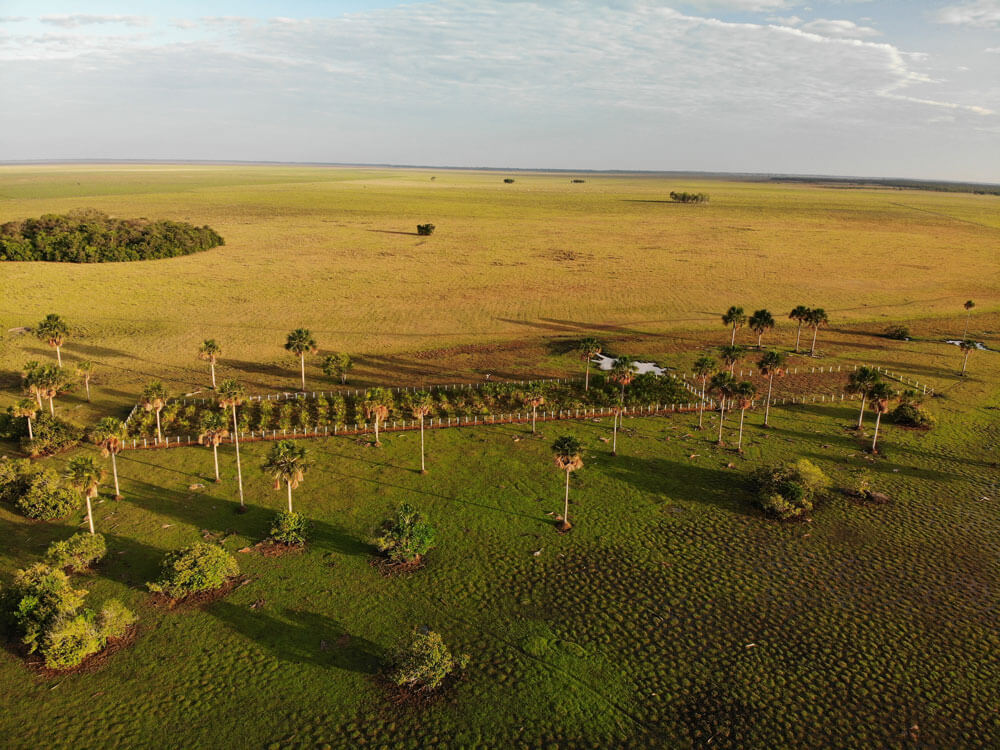
Photo: Fernando Castillo.
Swamps of Moriche Palm (Mauritia flexuosa) can also be found around the wetlands and streams. It is possible to find other species of palms in the riparian forest, including Attalea burytacea and Roystonea oleracea.
This WHSRN site includes two Civil Society Natural Reserves (RNSC in Spanish), properties that were converted to nature reserves by their owners to protect an ecosystem or natural habitat through conservation, restoration, and sustainable production. The RNSCs are part of the National Unique Register of Protected Areas (RUNAP), so each reserve is legally recognized and becomes part of the National System of Protected Areas (SINAP).
The WHSRN site comprises lands managed by the Municipality of Paz de Ariporo, and a total of 11 private properties: Hato el Boral, Finca El Campín, Finca San Andrés, Finca Regadera, Finca Palmeras, Finca Lagunazo, Finca Buenaventura, Finca San Cristobal – which together comprise the Important Bird and Biodiversity Area (IBA) Reservas de la Vereda Altagracia (CO205) – and Finca Chaviripa and Finca El Rubí, which make up the Chaviripa-El Rubí IBA (CO204). The 11th ranch, Finca Puerto Rico, lies outside the two IBAs. The area between the two IBAs and Finca Puerto Rico is also part of the new WHSRN Site, and is managed by the Municipality of Paz de Ariporo. Each of these ranches have management plans that prioritize the conservation of the native vegetation that characterizes this unique grassland ecosystem.
The Shorebirds of the Savanna
Through evaluations and regular site visits, 19 species of shorebirds have been documented at the site, including both migrants and residents. Migratory shorebirds such as Least Sandpiper (Calidris minutilla), Greater and Lesser Yellowlegs (Tringa melanoleuca and T. flavipes), Solitary Sandpiper (T. solitaria), Wilson’s Snipe (Gallinago delicata), and Spotted Sandpiper (Actitis macularius) choose the Sabanas de Paz de Ariporo y Trinidad as their wintering site year after year. These migratory shorebirds arrive between September and October, when the savannas are completely flooded, and depart at the end of the dry season, between March and April.
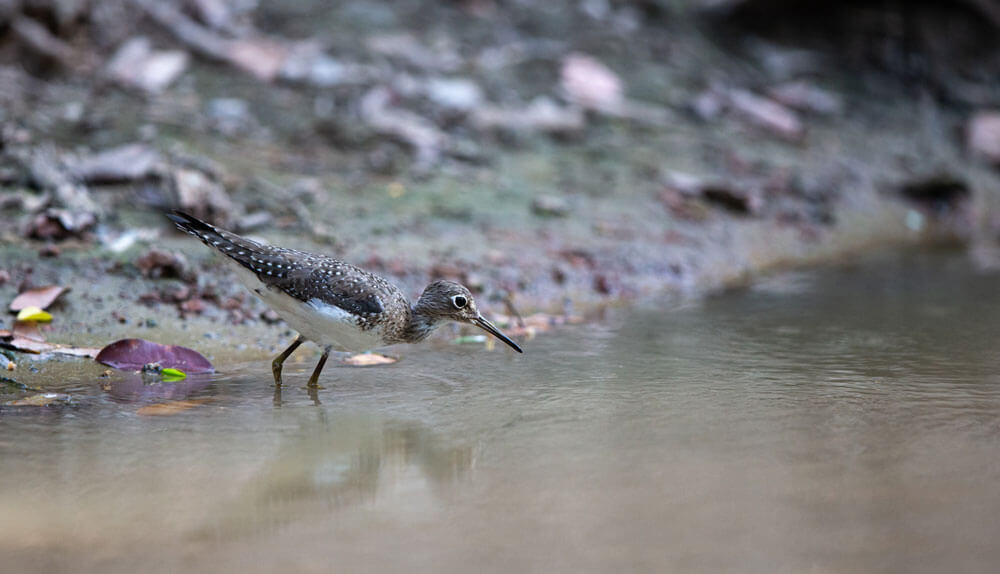
Solitary Sandpiper (Tringa solitaria). Photo: Living Wild in South America.
For the people that live near this WHSRN Site, the best-known shorebirds are the ones they see most frequently: the resident species such as Collared Plover (Charadrius collaris) and Pied Lapwing (Vanellus cayanus), that use the wetland banks and beaches that form around the rivers and streams to nest during the dry season. Other species known to the ranchers are: South American Snipe (Gallinago paraguaie), whose breeding displays can be observed at the beginning of the rainy season; the noisy Wattled Jacanas (Jacana jacana); the slender Black-necked Stilt (Himantopus mexicanus); the aggressive Southern Lapwing (V. chilensis), which is capable of flying close enough to brush the hat of anyone who dares to enter their nesting area; as well as the charismatic Double-striped Thick-knee (Burhinus bistriatus), that adorns the savanna with its elegance.
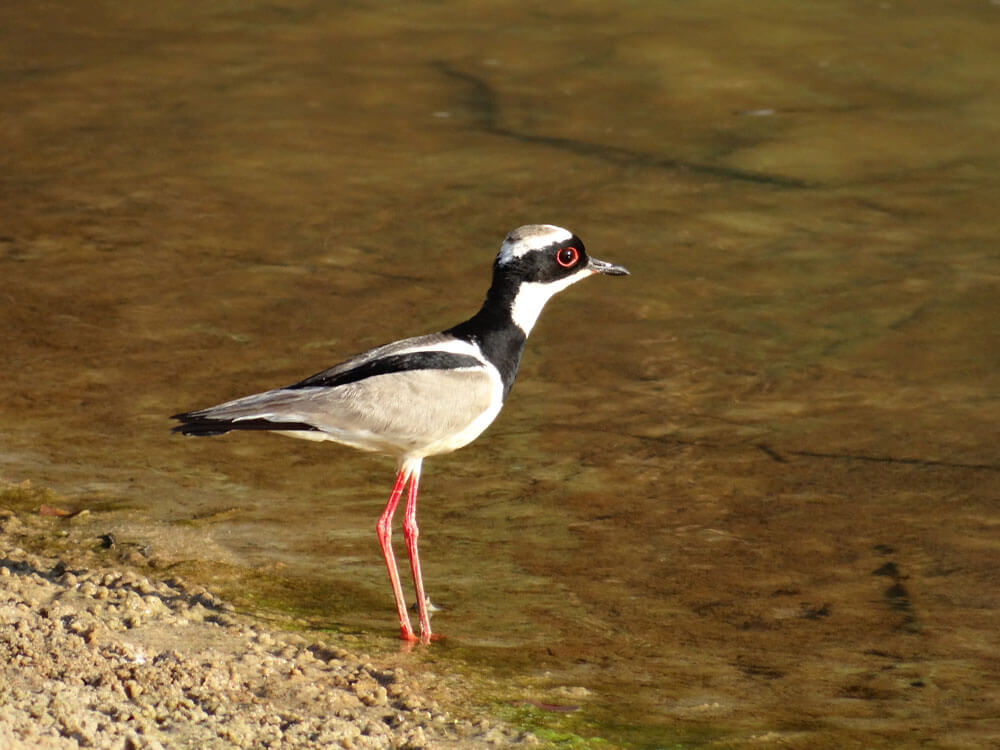
Pied Lapwing (Vanellus cayanus). Photo: Carlos Ruiz Guerra.
Buff-breasted Sandpiper: An Unknown Celebrity of the Savanna
Since 2015 Asociación Calidris has identified several locations within the WHSRN site where Buff-breasted Sandpipers regularly occur – areas that received more than 100 individuals between March and May. Between Mach 2015 and May 2019, they regularly observed more than 500 individuals, with a high count of 700 individuals – representing 1.25% of the species’ population, currently estimated at 56,000 by Andres et al. (2012).
For some residents of the WHSRN site, the Buff-breasted Sandpiper is the messenger of the rains, because the bird’s arrival announces that the first precipitation will fall on the savanna. In fact, the Buff-breasted Sandpiper is considered a bearer of good news, because the rains are eagerly awaited – especially when the dry season goes on too long.
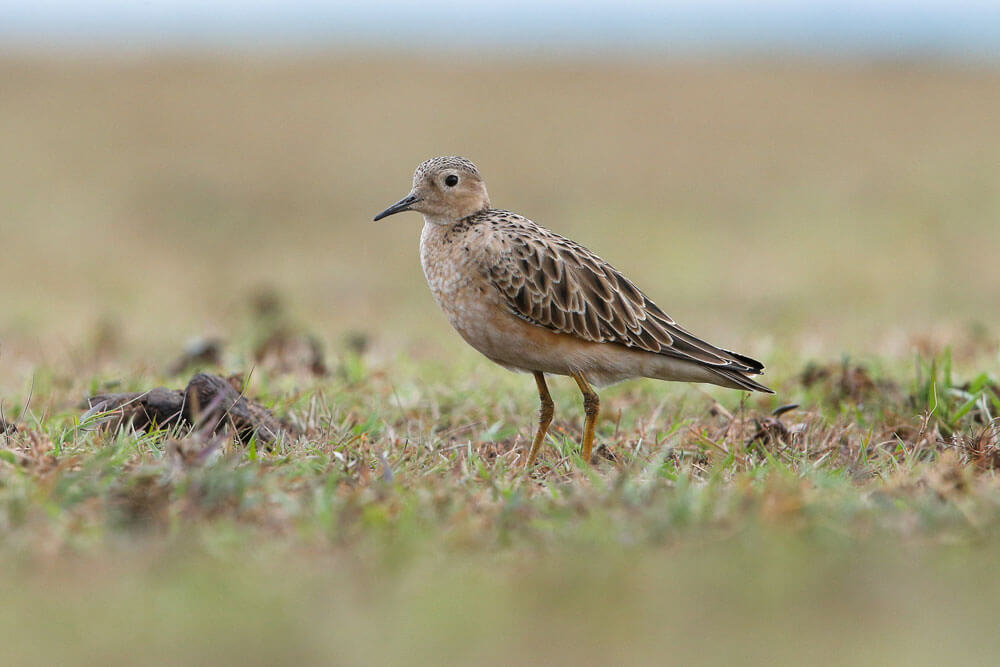
Buff-breasted Sandpiper, the “unknown celebrity” of the Savanna. Sabanas de Paz de Ariporo y Trinidad supports more than 1% of the species’ population. Photo: Living Wild in South America.
“Playero Canelo” (literally, Cinnamon Sandpiper) and “Correlimos Escamado” (roughly translated as Scaled Sandpiper) are names taken from Spanish books and bird guides, but unlike other birds of the Orinoquía floodplain, the ranchers never assigned this species a common name. The same happens with other shorebirds and small birds of the gallery forests, for which the ranchers have no common names. It seems that bigger and more colorful birds rob all the attention of the rancher imagination, like the Scarlet Ibis (Eudocimus ruber) or the Jabiru (Jabiru mycteria), which are even mentioned in traditional ranching folk songs.
Nowadays, more ranchers at the WHSRN site recognize C. subruficollis as the Buff-breasted Sandpiper, and maybe with time, they will start to mention them in their songs.
Other Birds of the Savanna
The bird diversity of this WHSRN site is truly spectacular, considering that 270 bird species are present. Among those that stand out is the Orinoco Goose (Oressochen jubatus) – a species that is globally Near Threatened according to the IUCN and Vulnerable in Colombia – that breeds at the site and gathers in numbers that total more than 7% of the entire global population. The site also supports five Near Threatened species (NT), two Vulnerable species (VU), and five species that are restricted to northern South America biome.
Our Work
Since 2012, Asociación Calidris, with the support of different national and international institutions such as the U.S. Fish and Wildlife Service, Bobolink Foundation, and Manomet Inc., identified opportunities to conserve biodiversity in the area between the streams La Hermosa and Yatea. This began the nomination of the IBAs at the site, which were designated in 2015 with the support of BirdLife International and the Alexander von Humboldt Institute. After the designation, a very solid relationship was built with the local communities, especially with 12 families of ranchers that live within these two IBAs. Through this alliance between Asociación Calidris and the farmers, a series of conservation actions have been implemented that seek to benefit not only biodiversity, but also these local families. These actions include a restoration program for the Moriche Palm, and the promotion of best management practices for raising livestock.
Ranching Culture Watches Over the Conservation of the Savanna
Livestock is an essential component of the ranching culture and today, thanks to the traditional practices that still remain, it is still possible to enjoy the great biodiversity of the savannas. Generation after generation, a proud love has been forged for the savanna, for its sunsets, for its Moriche Palm swamps, and for its birds. The fauna and flora are part of the daily life of the ranchers at the WHSRN site, and their love for their land and culture is evident. The great distance between this site and populated centers, and the limited access during the rainy season when the roads and highways flood, have led the land owners that make up the WHSRN site to develop a strong governance system that allows them to face life’s challenges as a community.
Resiliently, like their character, the ranchers defend their territory and don’t let the water in their wetlands, the soil of their savanna, and the trees of their forest be negatively impacted. Today, they express with vigor that they want to learn more about the proper management of their biodiversity and the provision of ecosystem services at the WHSRN site. A local community that knows how to work together and is committed to the conservation of biodiversity can be increasingly strengthened in a place with major attractions for tourism, research, and sustainable development.
Threats
One of the most worrisome threats is probably the expansion of rice cultivation in the municipalities of Paz de Ariporo and Trinidad in the last decade. Many areas intended for traditional livestock grazing are currently cultivated with rice.
Inadequate fire management – by suppressing it or overusing it – has negatively affected the current landscape of the savannas at the WHSRN site, according to testimony by the local residents. There is still no reliable information about the loss of large areas of native grasslands due to the expansion of woody vegetation, including fire-loving species such as “Chaparro” (Curatella americana).
On another note, this WHSRN site has been part of the areas of oil exploration and exploitation in past decades, which could raise concern that activities such as fracking could take place there in the future.
Next Steps
- Promote and implement adequate fire management on the natural savannas to restore and maintain key habitats for shorebirds.
- Conduct research on habitat use and migration phenology of Buff-breasted Sandpiper within the WHSRN site.
- Evaluate the impact of fire on shorebird populations that depend on the natural savannas.
- Involve local, regional, and national decision makers in the management and conservation of the WHSRN site.




